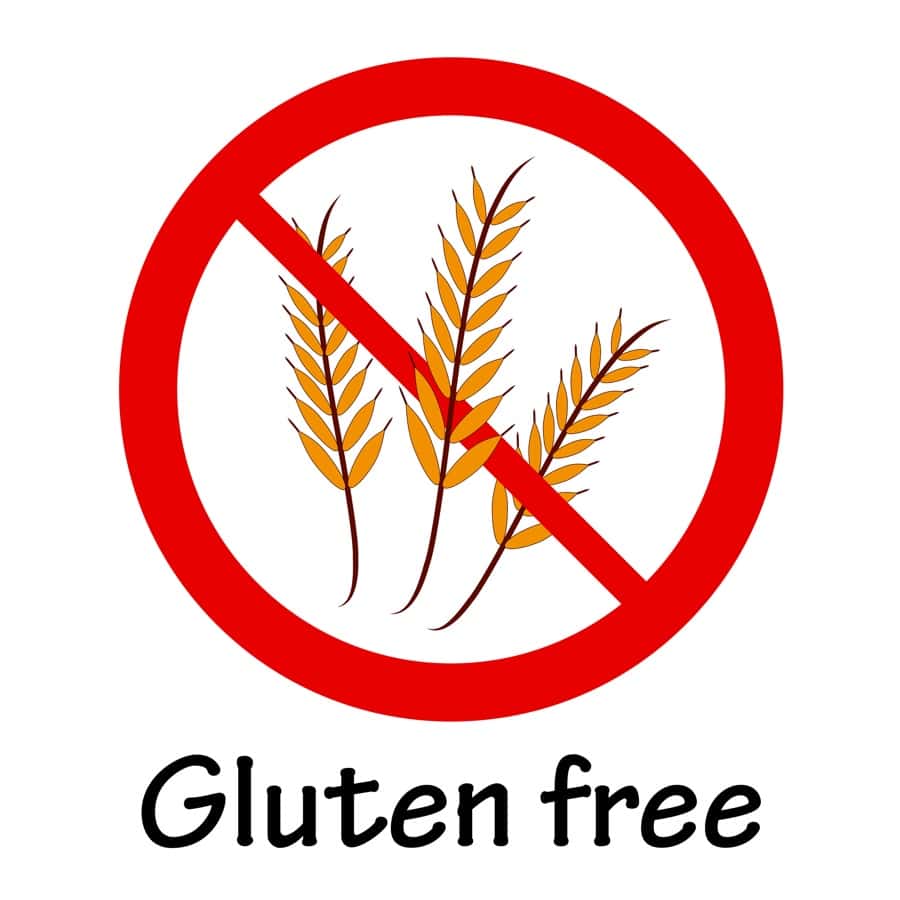
Have you been avoiding gluten? Twenty years ago, you might never have heard of gluten. The name “celiac disease” probably would have sounded exotic. No longer. Now, some scientists have linked the increase in celiac disease to greater exposure to environmental pollutants.
How Common Is Celiac Disease?
Celiac disease was once considered extremely rare, affecting no more than one person in 5,000. Pediatricians would occasionally diagnose babies with severe diarrhea as having the disease. However, in the past half-century or so, clinicians have recognized that it now affects about at least one percent of the population. Current estimates are that approximately one person in 130 has celiac disease. One study found that more than 1 percent of the population worldwide is affected (Clinical Gastroenterology and Hepatology, June 2018).
For people with a genetic disposition for celiac disease, the rates are even higher. One study that screened close relatives of celiac patients found 44 percent of them had the disease themselves (Mayo Clinic Proceedings, Sep. 2019). As a result, doctors now diagnose this condition on a regular basis.
There weren’t always so many cases of this disorder. A study of samples taken from Air Force veterans around 1950 shows that the prevalence of celiac disease among young healthy men at that time was 0.2 percent (Gastroenterology, July 2009).
What Is Celiac Disease?
In this condition, exposure to the gluten found in wheat, barley and rye triggers an autoimmune attack on the digestive tract. Although it affects tissues throughout the body, clinicians usually focus on the digestive tract because that is where the trouble starts. When susceptible people eat foods containing gluten, their immune systems attack the cells lining the digestive tract. The resulting damage can interfere with nutrient absorption. As a result, patients can experience problems such as anemia, fatigue, weakened bones, peripheral neuropathy, distinctive skin rashes, migraines or dementia. Specialists now recommend that doctors consider a celiac diagnosis when people are having trouble with cognitive decline. People with celiac disease are also four times more likely to die prematurely.
What foods contain gluten? Anything made of wheat, barley or rye. That includes beer as well as bread, pasta, some soy sauces, hot dogs, bouillon cubes and even pickles. Avoiding gluten completely is the one and only treatment that works.
Celiac Disease Diagnoses in Kids Exposed to Pollutants:
Why did the numbers of people with celiac disease increase so dramatically? Celiac disease is driven partly by genetics. Because genes don’t change quickly, they can’t explain the rapid rise in this condition.
Greater exposure to environmental chemicals, however, might be contributing. A new study conducted by investigators from NYU Langone Health found that youngsters exposed to high levels of pesticides and related compounds called DDEs are twice as likely to be diagnosed with celiac disease than those with low levels (Environmental Research, online May 11, 2020).
The researchers reviewed blood levels of chemicals such as pesticide-like DDEs and of PFAs, short for poly- or perfluoroalkyls. Manufacturers use PFAs to create stain repellent fabrics and nonstick cookware. Fire-fighting foam is an important source of PFAs that sometimes contaminates drinking water.
The Trouble With Forever Chemicals:
Such chemicals do not break down and may linger indefinitely in the environment. That is why they are often referred to as “forever chemicals.” In theory, no one should carry such pollutants in their blood. In actuality, however, many North Americans do.
Children and young adults with elevated levels of DDEs were twice as likely as those with low levels to have a celiac diagnosis. Young women with high levels of PFAs were five to nine times more likely to be diagnosed with celiac disease than those with low levels. High levels of DDEs were also linked to celiac disease in females.
The researchers also looked at pollutants known as PBDEs, found in flame retardants. Among young men, high levels of these chemicals doubled the chance of a celiac diagnosis.
The study included 30 youngsters subsequently diagnosed with celiac disease through blood tests and intestinal biopsy. The other 58 kids did not have celiac disease. Only people with a specific genetic susceptibility (either the HLA-DQ2 or HLA-DQ8 genotype) can develop celiac disease. However, not all individuals with this genetic makeup do so. The investigators hypothesize that the persistent organic pollutants can disrupt the tight junctions between cells lining the digestive tract. This in turn could produce conditions known as “leaky gut” that promote the immune dysfunction.
Protecting Young People from Pollutants:
This research suggests we should be protecting children and teens from such compounds. Because they act as endocrine disruptors, they can apparently trigger celiac disease in people who otherwise might not develop this problem. Because these compounds build up in the environment rather than dissipating, physicians may diagnose increasing numbers of people with celiac disease for the foreseeable future.
Learn More:
You will learn more about celiac disease in our eGuide to Digestive Disorders. This online resource is available in the Health eGuides section at www.PeoplesPharmacy.com.
To find out more about how pollutants affect our bodies, you may wish to listen to our interview with pharmacologist Andrea C. Gore, PhD. It is Show 1102: How Do Endocrine Disruptors Affect Your Health? We have also interviewed one of the NYU investigators, Dr. Leonardo Trasande. You can listen to him in Show 1152: Will Hormone Disruptors Affect Your Children’s Health? Last but not least, you will find several interviews on celiac disease. Our most recent interview was with Dr. Joseph A. Murray of the Mayo Clinic. Listen to him in Show 1100: What Is the Story on Celiac Disease?
Citations
- Singh P et al, "Global prevalence of celiac disease: Systematic review and meta-analysis." Clinical Gastroenterology and Hepatology, June 2018. DOI: 10.1016/j.cgh.2017.06.037
- Nellikkal SS et al, "High prevalence of celiac disease among screened first-degree relatives." Mayo Clinic Proceedings, Sep. 2019. https://doi.org/10.1016/j.mayocp.2019.03.027
- Rubio-Tapia A et al, "Increased prevalence and mortality in undiagnosed celiac disease." Gastroenterology, July 2009. DOI: 10.1053/j.gastro.2009.03.059
- Gaylord A et al, "Persistent organic pollutant exposure and celiac disease: A pilot study." Environmental Research, online May 11, 2020. https://doi.org/10.1016/j.envres.2020.109439


